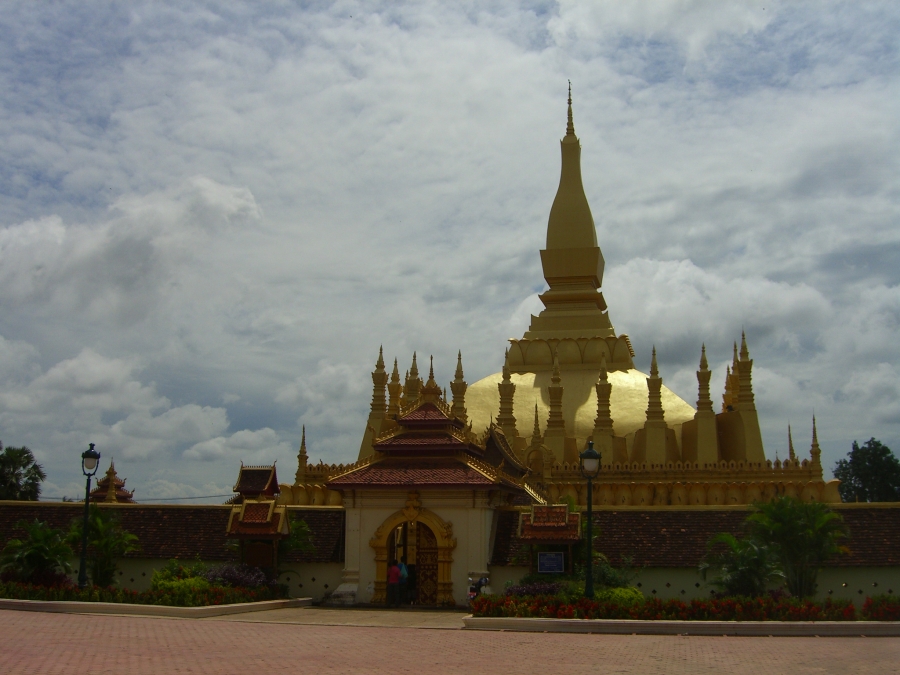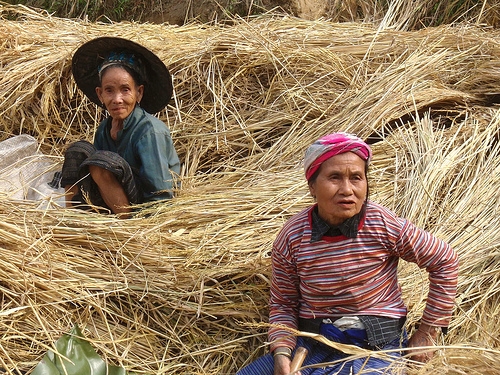Home to the beautiful Khone Papeng Falls (largest in southeast Asia), ornate temples, while being the “World’s Most Bombed Country” from the Vietnam War, the Lao People’s Democratic Republic has endured a long history of hardships. Like most countries in Southeast Asia, Laos has been a target for colonialism from France, as well as Japan. Laos gained independence as a constitutional monarchy in 1953 from the French but with the impact of Vietnam War, they faced their own arduous civil war (1953-1975) that resulted in the establishment of a communist government in 1975. 
Currently, Laos struggles to develop as a nation, however it does not stop their people from being known for their honesty and simplicity, often attributed to their Buddhist roots. A large part of Lao culture is derived from the influences of Theravada Buddhism. Even with the invasions from foreign nations, Laos was able to maintain their Buddhist religious culture from the eighth century. Buddhism is a vital part of the people in Laos. Every village has a Wat (temple) where the people worship daily in the morning and the evening. The most revered Buddhist stupa is thought to be established since the third century, the Pha That Luang is covered in gold, and shines bright in their capital city of Vientiane. Although Buddhist influences dictate an important part of Laotian culture, there are influences far before the establishment of Buddhism.
 Music and food have been two consistent aspects of Laotian culture that have prehistoric origins. The khene is their national instrument created from bamboo pipes which is traditionally used to play folk music. The khene has uniquely Lao origins and is still used in ritual ceremonies and festivals to courting women. Stick rice is another staple of prehistoric Lao traditions which has more meaning to their culture than one may think. They consume the most sticky-rice per person than any other country in the world. Yet, it is more than a tasty part of their everyday meals. They see it as a vital part of their culture, some groups of Laotian people plant a unique khao kam rice near their home in reverence to their dead parents or they will plant it on the edge of their rice fields to indicate that their parents are still alive.
Music and food have been two consistent aspects of Laotian culture that have prehistoric origins. The khene is their national instrument created from bamboo pipes which is traditionally used to play folk music. The khene has uniquely Lao origins and is still used in ritual ceremonies and festivals to courting women. Stick rice is another staple of prehistoric Lao traditions which has more meaning to their culture than one may think. They consume the most sticky-rice per person than any other country in the world. Yet, it is more than a tasty part of their everyday meals. They see it as a vital part of their culture, some groups of Laotian people plant a unique khao kam rice near their home in reverence to their dead parents or they will plant it on the edge of their rice fields to indicate that their parents are still alive.
 Throughout their history of annexation and occupation, they are still able to maintain their culture and thrive in their agricultural industry. Eighty-percent of their exports is surprisingly not rice! Laos is especially known in the southeast Asian region for their coffee production. They have ambitions to expand their market in beer production and have started creating a buzz around the world. Laos still encounters many challenges as any other developing country but being able to preserve their culture over the past thousand years has been a remarkable accomplishment for a country that has been constantly exposed to foreign influences.
Throughout their history of annexation and occupation, they are still able to maintain their culture and thrive in their agricultural industry. Eighty-percent of their exports is surprisingly not rice! Laos is especially known in the southeast Asian region for their coffee production. They have ambitions to expand their market in beer production and have started creating a buzz around the world. Laos still encounters many challenges as any other developing country but being able to preserve their culture over the past thousand years has been a remarkable accomplishment for a country that has been constantly exposed to foreign influences.
To learn more about Laos, attend Go Eat Give Destination Laos on March 19, 2016 at Pattaya Cafe in Atlanta, GA. Click here to learn more.
~ By guest blogger, Lilly Iijima. Lilly is a student at Oglethorpe University pursuing a major in International Studies with a minor in Japanese. Growing up in a multi-cultural household, she has seen first-hand the power of personally experiencing a different culture to eliminate previous misconceptions. Through this work, Lilly is committed to educating others about different countries and regions while learning about them herself.